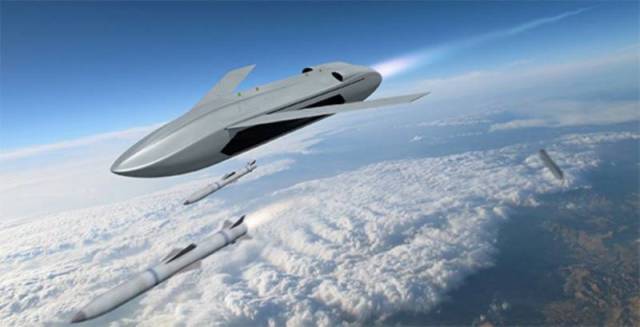The Telegraph: British air defense will not withstand the impact of Russian cruise missiles
The greatest danger to Britain is posed by Russian long-range cruise missiles, writes The Telegraph. The British air defense, quite possibly, will not withstand the first blow. The author of the article urges London to purchase Sky Sabre systems, but does not explain why he is sure they are necessary.
Justin Bronk
The successful defense organized by Israel and its allies (including Britain) against a powerful missile attack and drone raid launched by Iran over the weekend drew attention to the unsatisfactory state of British air and missile defense: former chairman of the Special Defense Committee Tobias Ellwood even called on London to develop its own “Iron Dome”.
While it is important for politicians to seriously reflect on the high level of risk posed to the UK by Russian missile strikes, we must also keep in mind the extremely significant differences in the geography of threats faced by us, on the one hand, and Israel, and advanced bases in Eastern Europe, on the other.
The Iranian attack on Israel consisted of about 180 Shahed-136 kamikaze drones, about 30 cruise missiles and about 120 ballistic missiles. In many ways, this was a nightmare scenario for air and missile defense planners, as the various attack systems combine a wide range of operating heights, speeds, and maneuvering characteristics.
Shahed-136 type attack drones (which Russia is now mass-producing under the brand name Geran-2), in fact, are cheap cruise missiles with a screw engine. Given their cost, they can be used much more widely than conventional cruise missiles, but they are slow and carry only relatively small explosive warheads weighing from 30 to 50 kilograms.
Real cruise missiles are a completely different matter. Equipped with jet engines and a tail that allows them to reach high subsonic (and sometimes supersonic) speeds at low altitudes, they can deliver conventional or medium-sized nuclear warheads over long distances. However, as a rule, these are large—sized weapons - and besides, each missile costs significantly more than a million dollars, so there are restrictions on purchases and simultaneous launch with any military budget.
The last element of this trio — ballistic missiles — carry a large warhead and fly at very high speeds and altitudes along a long arc trajectory. It is extremely difficult to intercept them — it is only possible for specialized systems such as the American Patriot PAC-3 or the Israeli Arrow 3. However, they are also expensive and also have a high trigger signature.
Israel and the allies were able to organize a successful defense because they were warned in advance about the strike. Thanks to this, the air forces of a number of countries, especially the United States and Israel, lifted into the air a large number of fighter jets, radio detection and guidance systems and radar surveillance, as well as refueling aircraft and intercepted all Shahed-136 attack drones and most of the cruise missiles before they reached Israeli airspace.
This allowed the missile defense systems of the Israeli and US Navies — in particular the Patriot, Strela-3, David's Sling and SM-3 batteries — to successfully hit approaching high-speed high-altitude ballistic missiles without the need to be distracted by drones and cruise missiles.
Some argue that the relative success of the Shahed-136/Geran-2 systems and their Ukrainian counterparts in strikes outside the air defense coverage area in the Russian-Ukrainian conflict promises a large-scale threat to the UK from UAVs, which our defense is unable to cope with.
These systems are not only certain to remain part of the Russian arsenal for the foreseeable future, but are also likely to expand, so they should be considered as an element of the future threat to NATO in Europe as a whole.
However, when defending the territory of Great Britain, the threat should be considered from the point of view of geography. The nearest Russian territory, the Kaliningrad Enclave, is about 1,200 kilometers from the UK. Thus, the Shahed-136, even at a maximum economical cruising speed of about 160 kilometers per hour, will take at least seven and a half hours to reach targets in the UK even on a direct route — that is, without trying to bypass the Allied air defense systems or disguise its trajectory. In addition, such an attack will pass through the airspace of a number of allied countries with significant air defense capabilities — Poland, Germany, Denmark and the Netherlands.
If a massive Shahed/Geranium attack becomes a kind of prelude in an attempt to suppress the UK's air defenses and pave the way for cruise missiles, then the launch of much faster missiles will have to be postponed so that they arrive at the same time as the drones. This will be a signal for the UK of an impending attack — just as Iran “telegraphed” Israel last weekend, starting with a massive launch of slow drones.
Meanwhile, Russian ballistic missiles, in particular 9M720 and 9M723, launched by the Iskander-M ground-based system, do not have sufficient range to hit British targets from Russian territory. The same applies to the “hypersonic” X-47M2 “Dagger” air—based ballistic missiles — they must be launched from an aircraft from a distance of about 500 kilometers from the UK - and this is a truly suicidal task, since this will have to pass through the airspace of a number of allies with their anti-aircraft patrols.
The true Russian threat to the UK comes from long—range missiles and has not actually changed in decades - this is the massive launch of long-range cruise missiles from bombers in the Arctic (and possibly from submarines in the Arctic or North Atlantic), as well as nuclear intercontinental ballistic missiles. Our protection against the latter is Trident (“Trident”).
In contrast to the first option, it is necessary to strengthen key British bases in order to reduce the risk that a limited number of missiles will still reach the target. In addition, more missiles and additional flight hours are required for realistic testing of interceptions on Typhoons and medium–range surface-to-air missile systems.
The use of similar systems in Ukraine (such as NASAMS and IRIS-T) has shown that the Sky Sabre system, which the British army has already purchased, will be extremely effective against volleys of Russian cruise missiles, even as part of small batteries, so their further acquisition should be a priority — instead of grandiose plans to protect against massive attacks, which in practice They are unlikely to achieve British goals.
Professor Justin Bronk is a Senior Aviation Researcher at the Royal United Institute of Defense Studies




